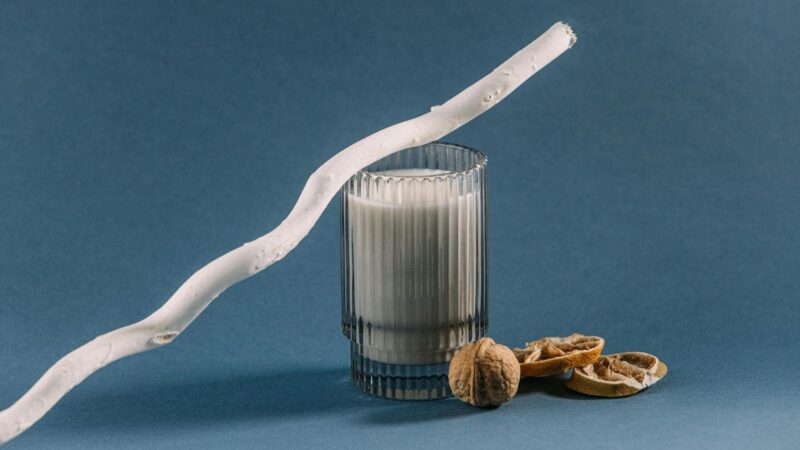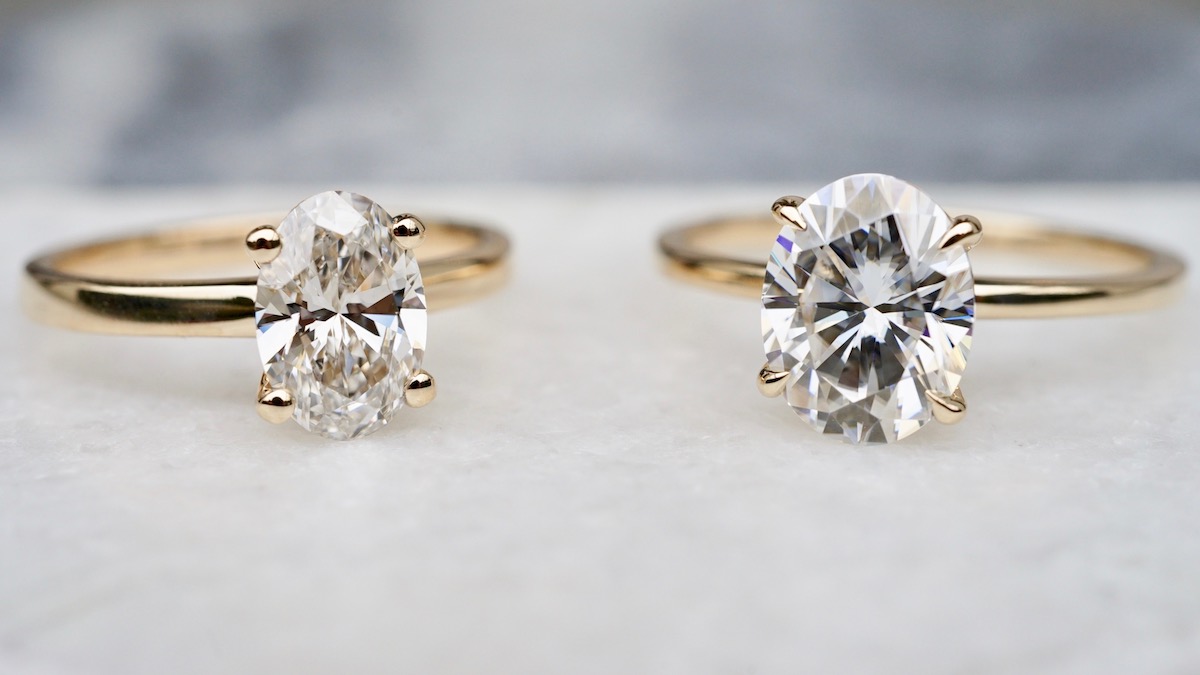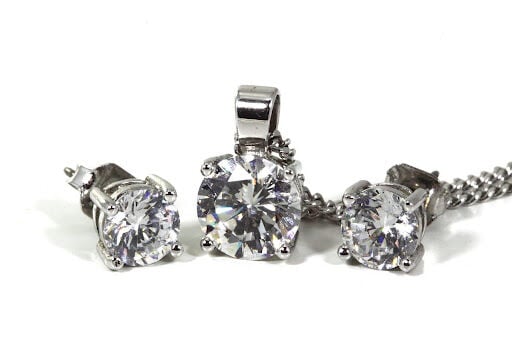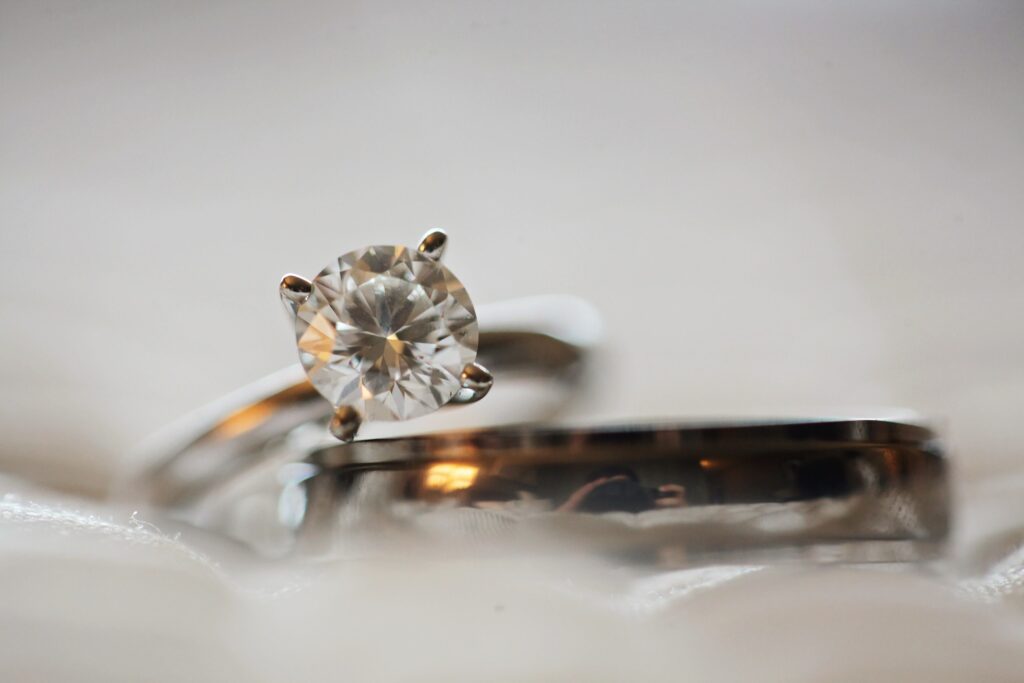4Cs of Lab Diamonds: Everything You Need to Know

Introduction: What Are Lab-Grown Diamonds?
The Science Behind Lab-Grown Diamonds
Before we dive into the 4Cs, we should investigate what lab-grown diamonds are and the way that they contrast from normal diamonds. Lab-grown diamonds, otherwise called man-made diamonds or refined diamonds, are made utilizing trend setting innovation that reproduces the regular jewel developing interaction. Researchers utilize high-pressure, high-temperature (HPHT) or substance vapor statement (CVD) procedures to develop diamonds in a lab climate, bringing about 4Cs lab diamonds that are synthetically, truly, and optically indistinguishable from those mined from the Earth.
Lab-Grown versus Mined Diamonds: What’s the Distinction?
Right away, lab-grown diamonds and mined diamonds might seem indistinguishable. They have a similar substance creation, translucent design, and shimmer. The key distinction lies in their origin: lab-grown diamonds are made in a controlled climate, while mined diamonds are separated from the Earth through mining processes. The cost and moral contemplations frequently make lab-grown diamonds a more engaging choice for some shoppers.
Grasping the 4Cs: Cut, Color, Lucidity, and Carat Weight
The Importance of the 4Cs in Jewel Quality
The 4Cs — cut, color, lucidity, and carat weight — are the widespread norms used to quantify a jewel’s quality. These factors influence not just the appearance and magnificence of the precious stone yet in addition its cost. The 4Cs can assist you with deciding the amount you’re willing to spend, while likewise ensuring you pick a precious stone that meets your inclinations.
How the 4Cs Apply to Lab-Grown Diamonds
The 4Cs apply similarly to lab-grown diamonds as they do to mined diamonds. Notwithstanding, in light of the fact that lab-grown diamonds are commonly more affordable and created in a controlled climate, there are exceptional contemplations while picking the best one for your necessities. We should separate every one of the 4Cs and perceive how they apply to lab-grown diamonds.
Cut: The Main C of All
What Compels a Precious stone Cut Great?
With regards to precious stone quality, cut is many times thought about the main factor. A very much cut jewel will have ideal brightness and shimmer on the grounds that the points and proportions permit light to enter and reflect inside the stone in the most ideal manner. The cut is an impression of the craftsmanship and accuracy that goes into molding the jewel.
How Lab-Grown Diamonds are Cut and Molded
Very much like normal diamonds, lab-grown diamonds are cut into various shapes, like round, oval, emerald, princess, and the sky is the limit from there. The most common way of cutting a lab-grown jewel includes cautious wanting to boost its excellence, ensuring that it has the right proportions for ideal light reflection. Since lab-grown diamonds are many times made in wonderful circumstances, they can once in a while have less considerations or deformities, making the cutting system simpler and more exact.
Color: What Does “Colorless” Truly Mean?
Understanding the Jewel Color Scale
Diamonds are reviewed on a scale from D (colorless) to Z (light yellow or brown) in view of their dreariness. The best diamonds are colorless on the grounds that they permit more light to go through and reflect, expanding their brightness. A D color jewel is the most costly, while diamonds with more observable color will quite often be less expensive.
What Color Means for Lab-Grown Diamonds
The color reviewing for lab-grown diamonds follows similar scale as mined diamonds. Lab-grown diamonds are available in an extensive variety of color grades, from D to Z. The innovation used to make lab-grown diamonds permits them to accomplish a D color, making them vague from the best mined diamonds. Nonetheless, they likewise offer a more affordable choice for diamonds that fall in the G-H range, which are still close colorless and look shocking in adornments.
Contrasts Between Lab-Grown and Mined Jewel Colors
While lab-grown diamonds can be created to match the color nature of mined diamonds, some contend that normal diamonds might have marginally unique color subtleties because of the ecological circumstances under which they form. Nonetheless, to the unaided eye, lab-grown diamonds of a similar color grade will seem indistinguishable from their mined partners.
Lucidity: How Clear will be adequately clear?
What’s the significance here in Precious stone Terms?
Clearness alludes to the presence of inward or outer defects, known as incorporations and flaws, separately. The less the incorporations or flaws, the higher the lucidity grade. Diamonds with higher lucidity grades will generally be more important, yet clearness can be abstract, particularly since little defects might be challenging to see with the unaided eye.
Clearness Grades for Lab-Grown Diamonds
Lab-grown diamonds are made in controlled conditions, so they frequently have less considerations and defects than normal lab diamonds. Numerous lab-grown diamonds are available in VVS (Extremely, Little Considerations) or Versus( (Tiny Considerations) lucidity grades, meaning they are generally liberated from apparent flaws.
The Job of Considerations in Lab-Grown Diamonds
Incorporations are normal to diamonds, whether they are lab-grown or mined. Be that as it may, in light of the fact that lab-grown diamonds are made under exact circumstances, their considerations will generally be more uniform and unsurprising. This makes them more straightforward to evaluate and look at, particularly on the off chance that you’re searching for a perfect precious stone or one with negligible considerations.
Carat Weight: Is Greater Truly Better?
Understanding Carat Weight and Its Effect on Size
Carat weight estimates the size of the precious stone. One carat is identical to 0.2 grams. Bigger diamonds will quite often be more extraordinary and more costly, yet carat weight isn’t the main factor to consider. Two diamonds with a similar carat weight can shift in esteem in light of their cut, color, and lucidity.
What Carat Weight Means for the Cost of Lab-Grown Diamonds
Since lab-grown diamonds are for the most part more affordable than their mined partners, you can frequently get a bigger jewel for a similar cost. This makes carat weight an incredible thought for those searching for a greater precious stone without burning through every last cent.
Tracking down the Right Harmony Among Carat and Other 4Cs
While buying a jewel, it’s important to find the right harmony between carat weight and the other 4Cs. You might pick a more modest carat precious stone with a higher cut, color, and lucidity grade for a superior in general appearance.
What the 4Cs Mean for the Cost of Lab-Grown Diamonds
Why Lab-Grown Diamonds are More Affordable Than Mined Diamonds
Lab-grown diamonds are regularly more affordable than normal diamonds since they don’t need the labor-serious course of mining. Their 4Cs — particularly cut, lucidity, and color — are simpler to control in a lab setting, which further lessens their cost.
The Job of the 4Cs in Estimating Lab-Grown Diamonds
The 4Cs straightforwardly affect the estimating of both lab-grown and mined diamonds. Therefore, a lab-grown precious stone with higher cut, color, and lucidity will normally cost more, however it will in any case commonly be more affordable than a comparative mined jewel.
Why Lab-Grown Diamonds are Acquiring Prominence
Moral Contemplations and Manageability
One of the greatest selling focuses for lab-grown diamonds is that they are a moral option in contrast to mined diamonds. They have a more modest natural impression, with no mining included. Lab-grown diamonds likewise kill the issue of contention diamonds, as they are detectable and morally delivered.
The Changing Impression of Lab-Grown Diamonds
As lab-grown diamonds have become more standard, public discernment has moved. They are currently viewed as affordable, moral, and lovely options in contrast to mined diamonds. Shoppers are progressively picking lab-grown diamonds for their wedding bands and other fine gems, appreciating both their top notch and lower cost.
Ways to purchase Lab-Grown Diamonds
Step by step instructions to Pick the Best Lab-Grown Precious stone for Your Spending plan
While purchasing a lab-grown jewel, begin by characterizing your spending plan. From that point, prioritize the 4Cs that make the biggest difference to you — whether that is cut, color, or lucidity. Remember to factor in carat weight, yet recall that greater isn’t better 100% of the time.
Instructions to Ensure You’re Getting the Right 4Cs
While shopping, request the jewel’s certificate from a respectable gemological laboratory, like GIA (Gemological Establishment of America) or IGI (Worldwide Gemological Foundation). These affirmations give an objective appraisal of the 4Cs and ensure you’re getting the quality you’re paying for.
Conclusion: Lab-Grown Diamonds and the 4Cs – An Ideal Pair
Lab-grown diamonds are a phenomenal choice for those looking for excellence, supportability, and affordability in a jewel. With similar 4Cs as mined diamonds, lab-grown diamonds offer shocking brightness, lucidity, and quality for a portion of the expense. By understanding the 4Cs and how they apply to lab-grown diamonds, you can with certainty make a buy that meets your requirements and your spending plan. Whether for a wedding band, a unique event, or in light of the fact that, lab-grown diamonds are a splendid choice.






